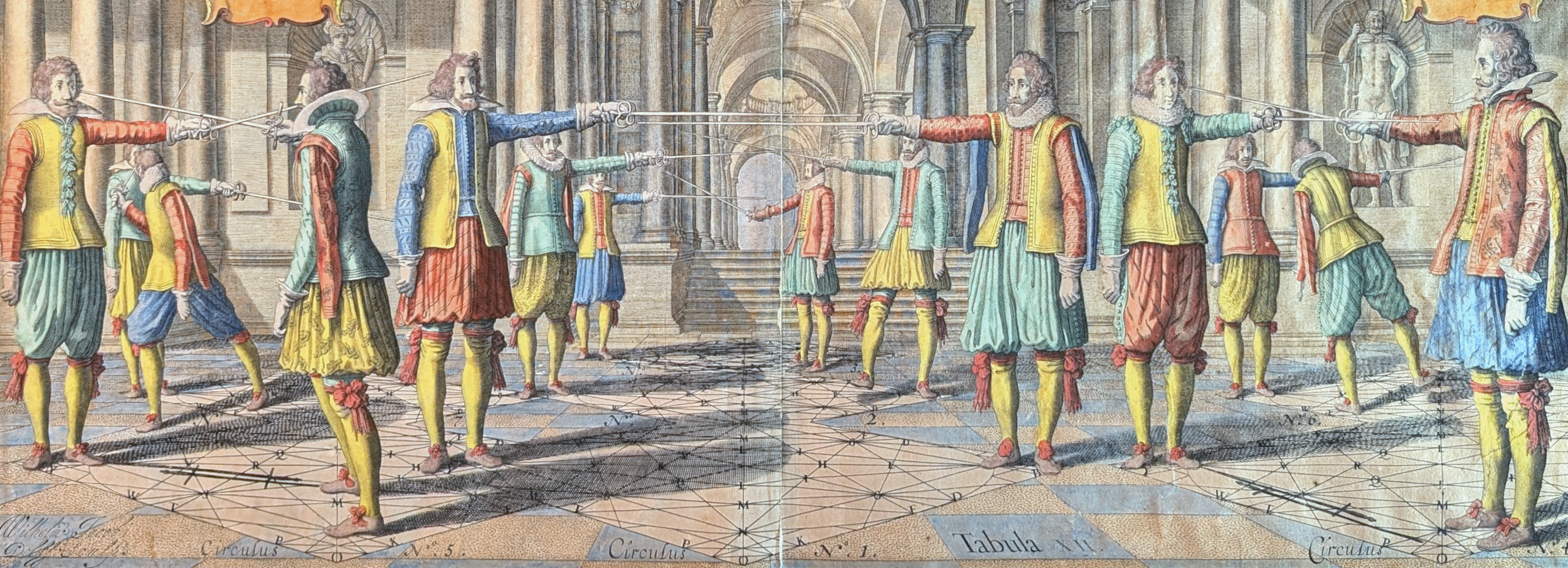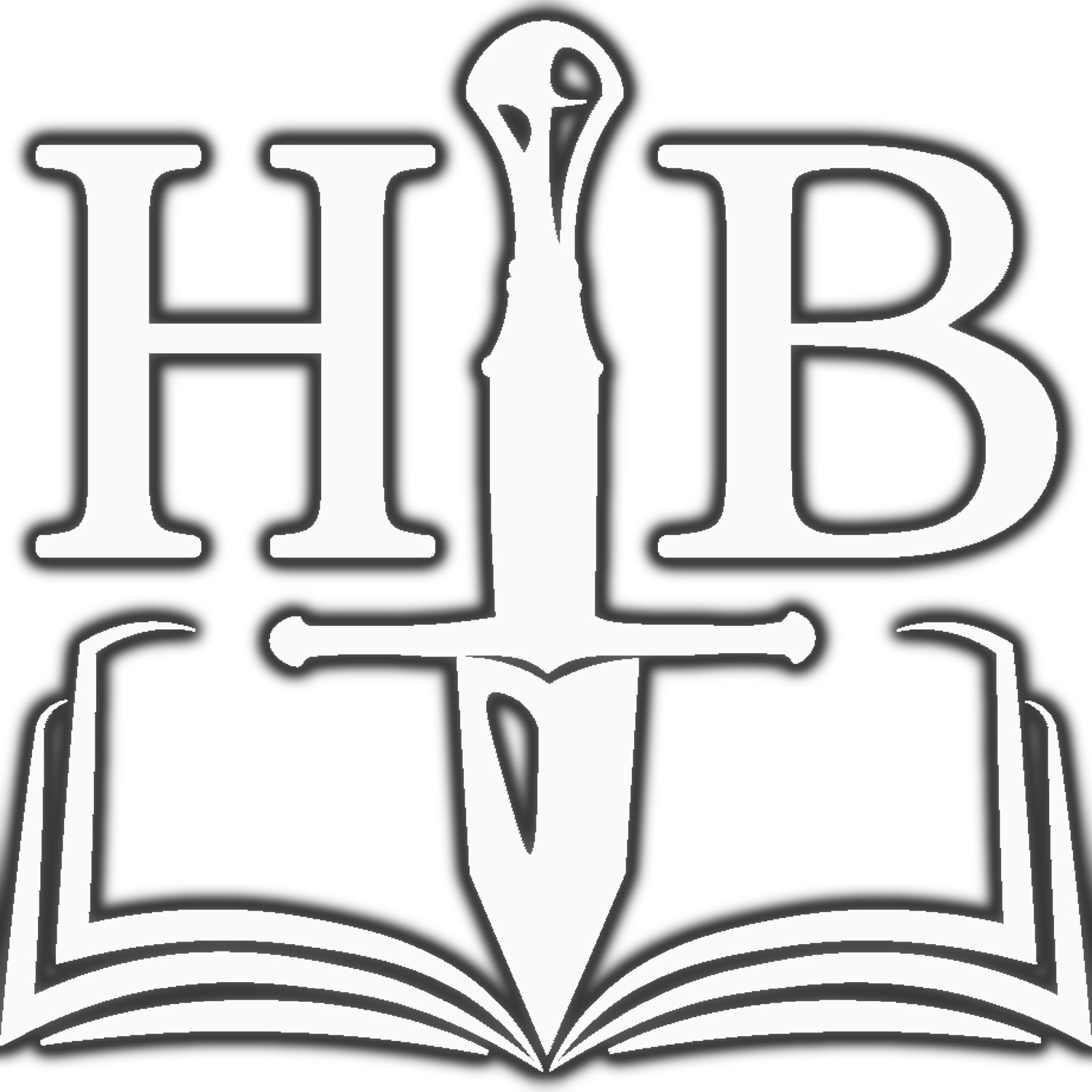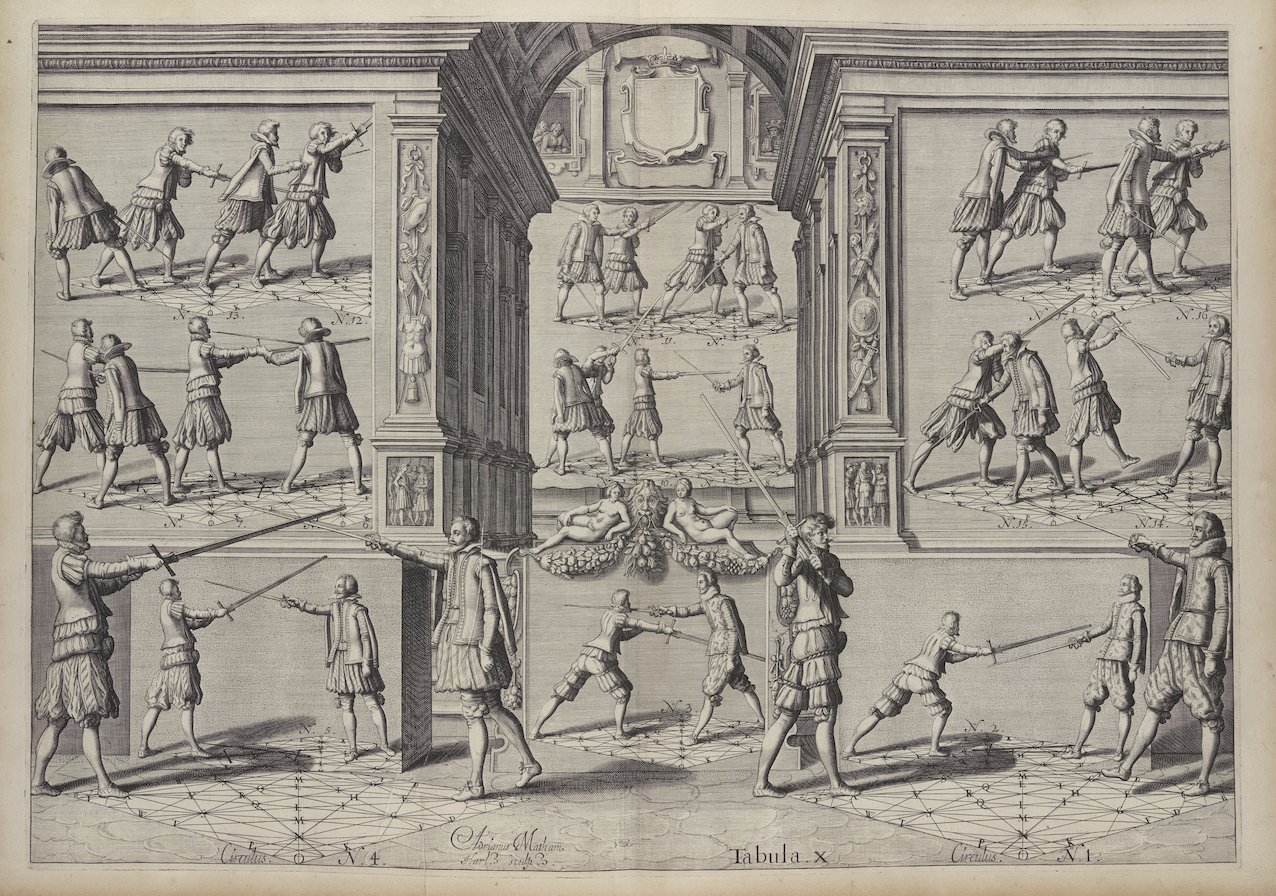
The Painted Thibault Project
The Painted Thibault Project
Digitizing the most beautiful versions of the most beautiful fencing treatise of all time for Wiktenauer
ghgfhdgfd
Feel free to skip down to the bottom if all you care about is buying an original Thibault print!
Background
In 2025, I’ve found my thoughts turning more and more toward Girard Thibault.
A Dutch fencing master from Belgium writing about Spanish fencing in French, his work stands out for a number of reasons. His Academie de l’Espée is probably the largest fencing treatise ever published, with over five hundred colossal pages measuring at around 580×430 mm (17×23 in.) after trimming. Crowning this staggering achievement of typography, executed by the famed Elzevier brothers in Leiden, are 45 monumental copperplate engravings, each measuring about 480×690 mm (27×19 in.), printed across a double-page and carefully glued into the book rather than sewn down the middle so there would be no detail lost or concealed in the center (as well as 12 more prints that are merely 480×340 or 13 ½×19 in.).
Many copies of this treatise exist in public and private collections around the world, and several have even been digitized in high resolution and licensed as public domain works, including copies in the Bibliothèque nationale de France, the Katholieke Universiteit Leuven, and Universiteit Leiden.
Dr. Daniel Jaquet examining a copy of Thibault's book at a conference I attended at the Museo delle Arti Marziali in Botticino, Italy.
However, while the bare, unfinished prints are already amazing works of art, the most beautiful are the ones that have been finished by a professional painter.
Perhaps the most spectacular of all is a book that was fully painted in 1629 by David Bailly and gifted to Henri II de Bourbon, Prince of Condé; Bailly was a friend of Girard Thibault and involved in designing some of the prints themselves, and was also son of Dutch fencing master Pieter Bailly. Many other painted prints exist, executed with varying degrees of skill and artistic merit by mostly unknown artists (professional book-painters rarely signed their work, but Bailly was primarily a portraitist so he was accustomed to doing so).
Unfortunately, all of these painted books seem to be in private hands and none have been scanned for public use. When they appear for auction, they tend to cost in the neighborhood of $50-100,000 for a complete book or $1,000-1,500 for a single painted print sold separately.
When I decided to try to print a reproduction of all of Thibault’s enormous illustrations at something close to full size (for the first time since the second edition was published in 1668), I knew that printing a complete set of these painted prints was impossible, so I set out to find the clearest unpainted scans possible. In the course of searching, I reached out to Gérard Six, a French fencing master who I was told had provided scans to a previous Thibault book. This lead the project in an entirely new and unexpected direction.
He didn’t have the scans I wanted, but what he did have—and offer to sell me—was eight original painted prints. His asking price was almost too good to be true, and I happily accepted. With those scans in hand, I soon purchased four more prints from other sellers (for somewhat higher prices), and ended up with twelve in total.
I had started to hatch a plan.
The Project
You may intellectually understand how enormous these are, but you don’t really grasp it until they’re spread across your entire living room
Book 2, Table 10, engraved by Adriaen Matham after 1620 and printed in 1626-30 in the Elzevier workshop; the bottom comes from a complete book painted by David Bailly in 1629.
For the past few years, Wiktenauer has been slowly expanding into the 17th century. Part of why it’s going so slow is that we’re now venturing into territory that hasn’t been explored or mapped out nearly as well as the 14th-16th centuries, and as a result, our mission is shifting more and more into developing new resources rather than just collecting and cataloging existing ones.
These twelve prints are another step in that direction, and will be used to improve access to Thibault’s art for everyone. While unfinished prints from fencing treatises are used extensively on Wiktenauer, we prefer the finished ones when they’re available for two reasons: on an educational level, they’re an important part of art history and raise awareness of the reality of how engravings were intended to be used and views, and on a functional level, they’re usually easier to understand and visually process on smaller screens like phones and tablets.
Below, you can purchase one of these prints of your very own. Each one is a unique piece of history, created by craftsmen of another age—paper-makers, engravers, printers, and painters—and passed down through 400 years to arrive in my hands, and soon into yours. I’m averaging out the cost of all the engravings, and the price is still better than I’ve ever found online (thanks largely to Gérard’s generosity): $400.
But not right away. First, I’ll send them to a conservator at Green Dragon Bindery to fix them up and make them durable enough to hopefully survive another four hundred years. I’ve already initiated this process. (If you’d like additional conservation services beyond what’s strictly necessary to get your print in the best shape possible, we’ll chat about what other services the conservator recommends after you’ve made the purchase.)
Then, in partnership with the Digital Commonwealth program, I’ll send them to the Boston Public Library imaging studios to be digitized. These scans will be placed online through the Digital Commonwealth portal, the Internet Archive, and the Thibault article on Wiktenauer, all under a public domain certificate allowing free re-use forever. Hopefully, over time, we’ll be able to get scans of more of these painted prints and eventually collect all 45.
After the digitization is complete, the prints will finally be mailed to individual buyers in enormous boxes (I can’t stress enough how big these things are—luckily, shipping costs are mostly based on weight.)
An original page created for Academie de l'Espée, the treatise of Girard Thibault d’Anvers.
This print was engraved by Egbert van Panderen, printed in the Elzevier workshop in Leiden between 1626 and 1630, and then painted by an unknown artist some time in the 17th century.
It’s unknown whether it was cut out of a fully-painted bound book or simply removed from an unbound copy.
Provenance information is not available.
An original page created for Academie de l'Espée, the treatise of Girard Thibault d’Anvers.
This print was engraved by Egbert van Panderen, printed in the Elzevier workshop in Leiden between 1626 and 1630, and then painted by an unknown artist some time in the 17th century.
It’s unknown whether it was cut out of a fully-painted bound book or simply removed from an unbound copy.
Provenance information is not available.






